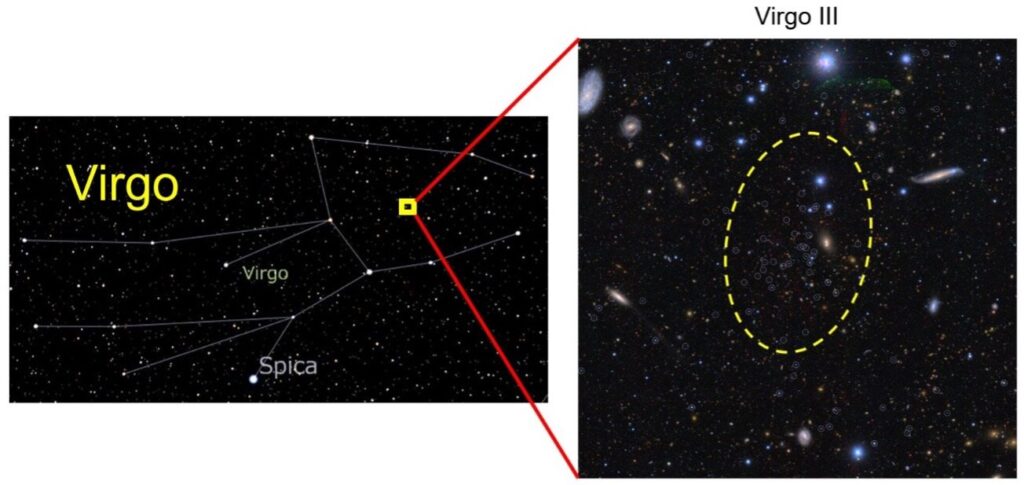An international team of researchers has announced the discovery of two candidates for Milky Way satellite galaxies. This finding may shed light on a long-standing astronomical mystery.

How many satellites does the Milky Way have? The answer to this question has long troubled astronomers. The fact is that the Milky Way has fewer satellite galaxies than the standard dark matter model predicts. This is called the missing satellite problem.
To find the missing satellites, the international team of researchers used data from the HSC-SPP survey performed by the Subaru telescope. While analyzing the images, they discovered two previously unknown ultrafaint dwarf galaxies, designated Sextans II and Virgo III. They are located 411 and 492 thousand light-years away from Earth, and their effective radii (the region from which half of a galaxy’s light is emitted) are 500 and 143 light-years.
Following this discovery, the total number of ultra-faint dwarf galaxies found by the HSC-SPP survey reached nine. This is still far less than the 220 satellite galaxies predicted by standard dark matter theory.
However, it should be taken into account that the HSC-SSP view does not cover the entire celestial sphere. If the distribution of companion galaxies in the rest of the sky is similar to that found in the HSC-SSP-captured region, our galaxy may actually possess about 500 companions. And, as paradoxical as it sounds, the problem of missing satellites becomes a problem of too many satellites.
So astronomers plan to continue observations with more powerful telescopes that can cover wider areas of the sky, like the Vera Rubin Observatory, which will be operational next year. They will allow us to more accurately determine the actual number of satellites in our galaxy.
Earlier we told you about how astronomers found “Cosmic Botox” at the center of the Milky Way.
According to Phys.org


